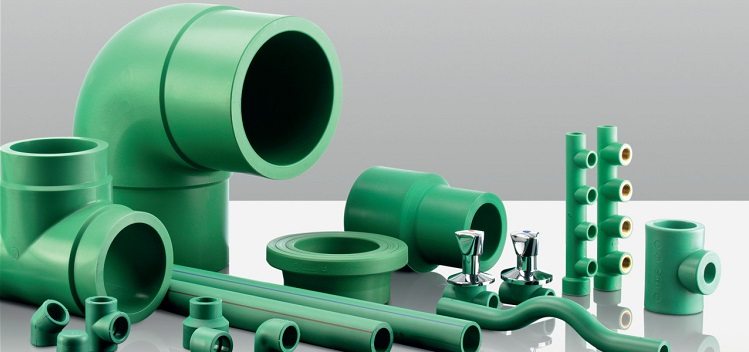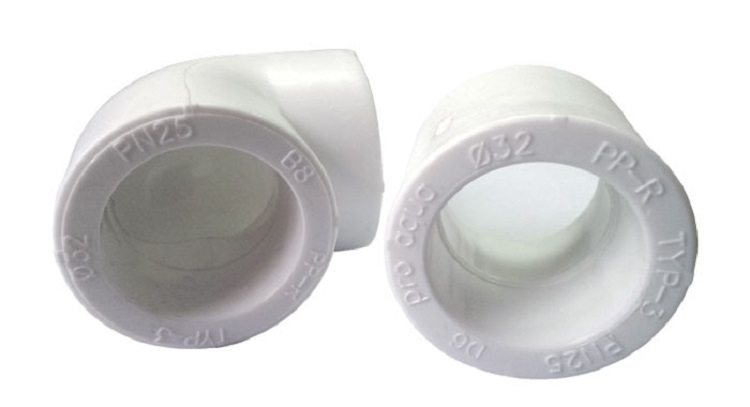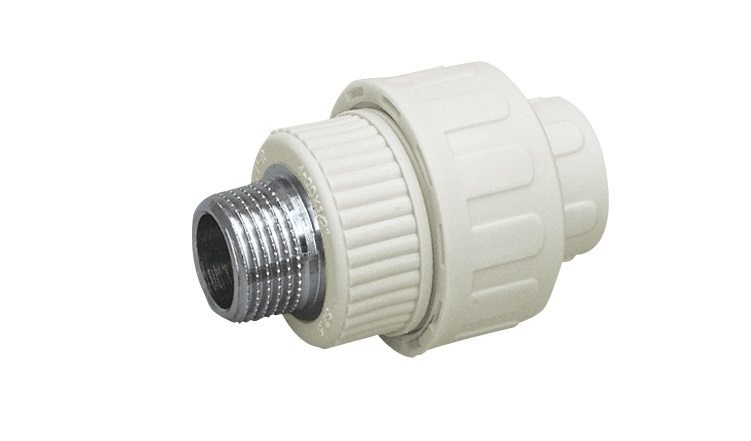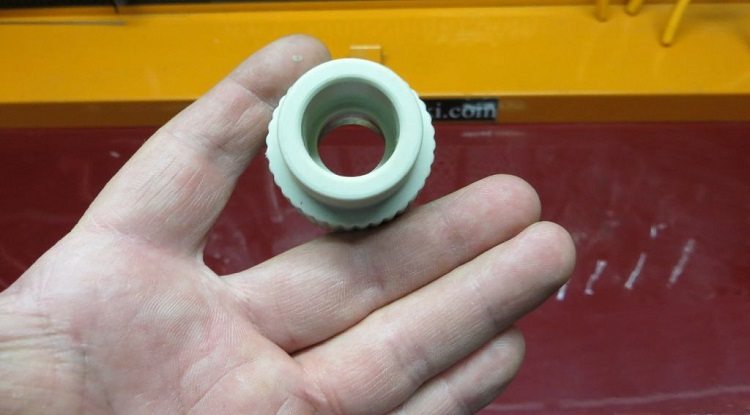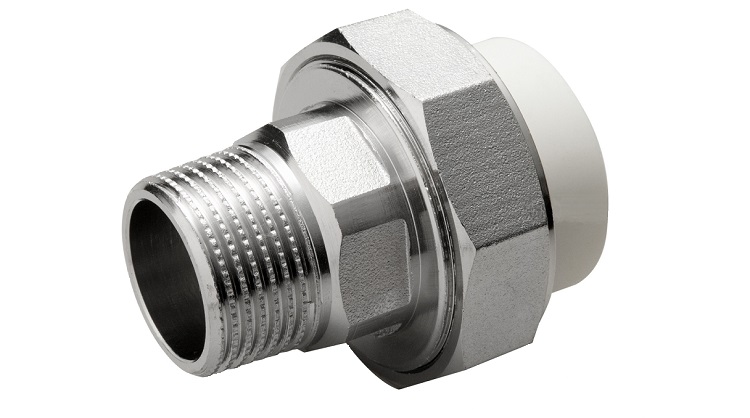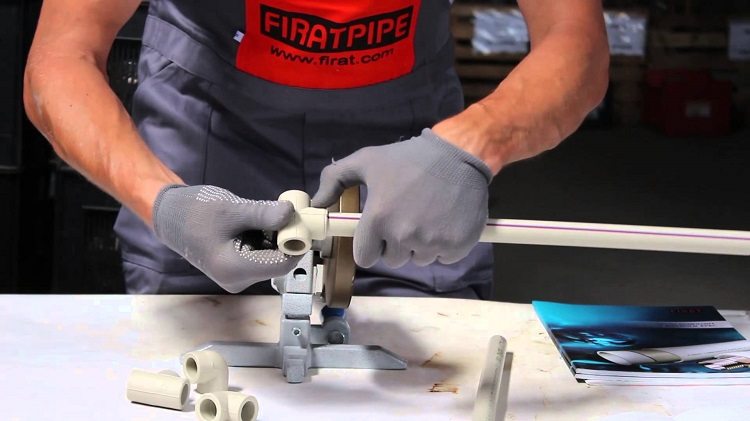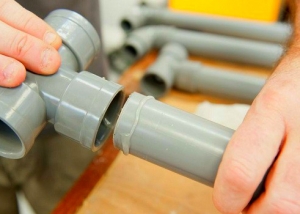Fittings for polypropylene pipes (or fittings) are made by injection molding under pressure. Fittings are used for mounting or for repairing a water supply, heating, sewage system. The exception is pipelines that are used for fire water supply. Polypropylene pipes with fittings are used to supply process water, whose temperature ranges from 5 to 95 ° C.
Content
General characteristics of fittings
Before you buy a fitting for polypropylene pipes, you need to make sure that it meets the prescribed specifications and drawings. But it is forbidden to use welding in the socket relative to press fittings and pipes, which differ in the composition of the raw materials.
Advice! The surface of some metal pipe parts that come into contact with the fitting for polypropylene pipes must be coated with a thick layer of chromium, zinc or nickel. The spraying thickness should be at least 10 microns.
Before buying, you need to check the appearance of the fittings themselves on polypropylene pipes. They should not have any external damage, swelling and cracking. All deviations adversely affect the performance after installation in the plumbing and heating system. The color scheme is diverse. After carrying out the experiments, it was revealed that the fittings welded with the pipe into the socket do not leak and do not burst for a long time even with regular internal pressure in the sewer and heating system. In the manufacture of press fittings for pipes made of polypropylene, only primary raw materials are used, the composition of the material is not intended for mass production.
Marking on press fittings for polypropylene pipes is applied in such a way that the structure of the material is not damaged, for example, using a heated tool or printing. If the printing method is used, the color of the marking must be different from the color of the product. On quality products, not only the trademark is applied, but also the name of the manufacturer, date of manufacture and batch of goods. When buying, pay attention to where the marking is applied. On fittings, information is not applied near the future connection, so that after use it is possible to find out details about the fitting.
What are the fittings for a polypropylene pipeline
Shaped parts are available on the market for consumers, which differ in two main indicators - shape and diameter. When mounting, the following types of fittings for polypropylene pipe systems are used:
- adapters;
- couplings;
- tees;
- corners;
- compensators.
The simplest type of fittings are couplings. The shape is a bit like a barrel. Intended for connecting pipes with the same diameter, for example, a heating system pipe. The type of adapters is also referred to as simple press fittings for polypropylene pipes, at the ends from different sides the outlets are always larger or smaller - in order to join pipes of different diameters. When using an adapter from a threaded pipe to an adhesive, on the one hand, there is an external thread, and on the opposite, an internal thread.
Corners are relevant when it is necessary to turn the water pipes without bending the pipe itself.Fittings angles with external thread are used for pipes with plumbing or faucets.
Advice! Corners can rotate pipes not only 90 degrees (forming a right angle), but also 45.
Using a tee for polypropylene pipes will help to connect several pipes in a sewer, heating system at the same time. Depending on the need, there are tees with different diameters and internal reliefs. Polypropylene fittings corners will help to connect pipes with different sections.
How to choose the diameter of the fittings
To mount a plastic pipeline for polypropylene pipes in the sewers, tees with a diameter of 20, 30, 25 or 40 millimeters are required. Press fittings are also available for sale, the diameter of which reaches 110 millimeters. But they are used to mount the pipeline of industrial production - in everyday life they are useless. Private consumers will most likely need tees and corners, whose diameter is 20 millimeters.
When buying press fitting parts for polypropylene pipes, you must pay attention to the diameter indicated on the marking. Correctly choosing all the accessories for mounting polypropylene sewerIt’s possible to do everything yourself and promptly. The only thing necessary is to follow the manufacturer's recommendations, clearly follow the instructions and carefully read the information on the marking in order to buy fittings with a suitable diameter.
Methods of joining pipes and fittings
Before starting work, it is worth considering that polypropylene pipes fusible and ductile, belong to the category of thermoplastic materials. Respectively:
- the thread that is cut into polypropylene pipes cannot provide the necessary mechanical strength of the joint;
- for a polypropylene pipe, a compression fitting cannot be used, since it compresses it, which will inevitably lead to leakage over time;
- if possible, it is possible to use the method of press connection using a rubber sealing ring, but with strong jerks, the joint in the tee and pipe can be broken due to low strength indicators;
- heating the polypropylene to a fusible state will help to ensure high-quality fastening, which will withstand internal pressure for a long time, without harm to tightness.
Accordingly, welding is the best option for polypropylene pipe connections with fitting. But, if it is not possible to use welding, try to pay attention to fittings for polypropylene pipes American.
Advice! American fittings can be used several times - they are easily unscrewed and screwed on as needed.
“American” is represented by a special detachable combined fitting, which is equipped with metal thread on one side and a polypropylene base with the opposite. An American will help to connect a metal and plastic pipe without losing the tightness of the pipes.
Features of the pipeline mounting process
In order to weld several fittings for polypropylene pipes for heating, the most ordinary soldering iron working at low temperatures is used. It is advisable to purchase soldering iron with several nozzles, which can be used to work with pipes of various diameters. This is especially true when three pipes of different diameters are connected to the fitting tee.
To begin with, it is necessary to remove the external chamfer from the pipe, otherwise when the pipe is joined with the fitting, it can be deformed. Reinforced pipes need to be cleaned - that is, remove aluminum foil from the pipe mount.This is done so that when mounting the foil does not appear between the pipe and the fitting, and subsequently is not wetted by water.
In fact, the foil does not interfere with the welding process, but the process of destruction of the reinforcing metal layer sometimes leads to delamination of the entire pipe. But, if there is the slightest potential between the sections of the water pipe in the sewer and the heating system, it will begin to collapse. Therefore, it is necessary to use a cross-cutter to remove the reinforcing film from the site where the welding is carried out.
The welding process itself does not take much time and is carried out as follows:
- a nozzle for a soldering iron is selected, depending on the diameter of the pipe and fitting;
- the nozzle is mounted in the heating element and the soldering iron is ready for use;
- the pipe is inserted into that part of the nozzle, which is wider, the fitting is put on a narrow part;
- After the pipe is inserted into the fitting, it is necessary to hold for several seconds until the plastic has completely hardened. If a tee is used, it is necessary to use a soldering iron in turn and connect the pipes;
- then the process is repeated as many times as necessary in all sections.
Connection with metal pipes can be carried out using either an American or a press fitting.
Sometimes a situation may arise when a new pipeline in the heating system needs to be joined with old steel pipes. We have to deal with steel risers and bends. In this case, diffuse welding or mounting of press fittings can be used only after some preparatory work. To begin with, the risers are turned off, water is discharged, then the old steel water pipe is dismantled.
Advice! If the old pipes will no longer be used for their intended purpose, it is better to use a turbine during dismantling. The cutting process will take much less time than the analysis of rusted parts.
The process of dismantling an old steel water supply system includes:
- unscrewing old valves. After all, as a rule, all water supply systems in the sewerage were equipped with screw valves, which were made of brass or cast iron. They must be replaced by ball. They more easily block the flow of water with a simple turn of the lever;
- cleaning with a cable the entire section of the water supply to the riser itself - it is necessary to clean the area from accumulated blockage, rust and deposits for a free flow of water;
- mounting a new valve and filter. The filter is necessary in order to extend the life of the mixer and other plumbing and appliances (for example, a washing machine). When sealing the pipeline, it is best to use sanitary flax, which is impregnated with linseed oil or paint;
- after mounting the filter, a fitting is installed, which, on the one hand, has a metal thread, and on the other, a polypropylene coupling (American).
If you follow all the instructions, installing press fittings and American women will help to extend the life of the water supply system and prevent leakage in the heating or sewage system.
